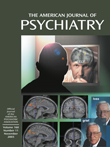Functional Neuroanatomy of Grief: An fMRI Study
Abstract
OBJECTIVE: In this study the authors examined the functional neuroanatomy of grief, which to their knowledge has not been studied previously in functional neuroimaging research. METHOD: Grief was elicited in eight bereaved women through photographs of the deceased versus a stranger, combined with words specific to the death event versus neutral words. Use of both pictures and words resulted in a 2×2 factorial design. RESULTS: Three brain regions were independently activated by the picture and word factors: posterior cingulate cortex, medial/superior frontal gyrus, and cerebellum. The two factors also activated distinct regions: for the picture factor, they were the cuneus, superior lingual gyrus, insula, dorsal anterior cingulate cortex, inferior temporal gyrus, and fusiform gyrus; and for the word factor, they were the precuneus, precentral gyrus, midbrain, and vermis. The interaction of the two factors showed significant activation in the cerebellar vermis. CONCLUSIONS: Grief is mediated by a distributed neural network that subserves affect processing, mentalizing, episodic memory retrieval, processing of familiar faces, visual imagery, autonomic regulation, and modulation/coordination of these functions. This neural network may account for the unique, subjective quality of grief and provide new leads in understanding the health consequences of grief and the neurobiology of attachment.



